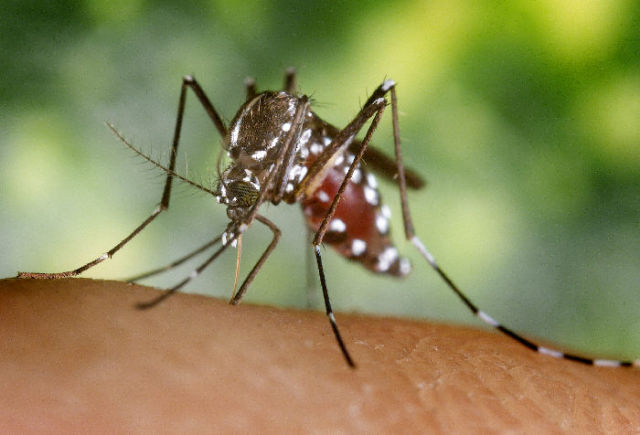
It’s strange to think that “Person of Interest” began as something its creator Jonathan “Jonah” Nolan described as a “Twilight Zone”-flavored scenario. Nolan pondered what would happen if,...

It’s strange to think that “Person of Interest” began as something its creator Jonathan “Jonah” Nolan described as a “Twilight Zone”-flavored scenario. Nolan pondered what would happen if,...

(credit: CDC/ James Gathany)
The US Food and Drug Administration on Monday approved the first human trial of an experimental Zika vaccine, according to a joint announcement by the two companies behind the new therapy.
The companies, Inovio Pharmaceuticals, Inc., based in Pennsylvania, and GeneOne Life Science, Inc., based in South Korea, said that their DNA-based vaccine...

Guest Commentary: During the recent Technology Alliance luncheon, Microsoft CEO Satya Nadella shared stories about his rise within the company...
The interaction of myosin with actin filaments is the central feature of muscle contraction and cargo movement along actin filaments of the cytoskeleton. The energy for these movements is generated during a complex mechanochemical reaction cycle. Crystal structures of myosin in different states have provided important structural insights into the myosin motor cycle when myosin is detached from F-actin. The difficulty of obtaining diffracting...
 Netflix is nearing two decades as a service, but if feels that the simplified streaming service has been around for time immemorial. However, you still have to pay for it every month, and the price keeps going up. If you win this week’s GeekWire Giveaway, you can...
Netflix is nearing two decades as a service, but if feels that the simplified streaming service has been around for time immemorial. However, you still have to pay for it every month, and the price keeps going up. If you win this week’s GeekWire Giveaway, you can...
Theories of the formation and early evolution of planetary systems postulate that planets are born in circumstellar disks, and undergo radial migration during and after dissipation of the dust and gas disk from which they formed. The precise ages of meteorites indicate that planetesimals—the building blocks of planets—are produced within the first million years of a star’s life. Fully formed planets are frequently detected...
 About 10.7 percent of 10,000 firms surveyed by cloud monitoring firm Datadog have adopted technology from containerized-software vendor Docker as of this month — a 30-percent increase from last year’s 8.2 percent, according to a newly released study titled “Eight surprising facts about real Docker adoption.”
About 10.7 percent of 10,000 firms surveyed by cloud monitoring firm Datadog have adopted technology from containerized-software vendor Docker as of this month — a 30-percent increase from last year’s 8.2 percent, according to a newly released study titled “Eight surprising facts about real Docker adoption.”
The results come as the Docker community gathers...
Theories of the formation and early evolution of planetary systems postulate that planets are born in circumstellar disks, and undergo radial migration during and after dissipation of the dust and gas disk from which they formed. The precise ages of meteorites indicate that planetesimals—the building blocks of planets—are produced within the first million years of a star’s life. Fully formed planets are frequently detected...
 Good news for Visa holders: Starting today you can finally use your credit cards at Costco.
Good news for Visa holders: Starting today you can finally use your credit cards at Costco.
For many years, Costco shoppers could only use American Express credit cards. The long-awaited switch to Visa took effect Monday.
Issaquah-based Costco also...
The first-passage time, defined as the time a random walker takes to reach a target point in a confining domain, is a key quantity in the theory of stochastic processes. Its importance comes from its crucial role in quantifying the efficiency of processes as varied as diffusion-limited reactions, target search processes or the spread of diseases. Most methods of determining the properties of first-passage...